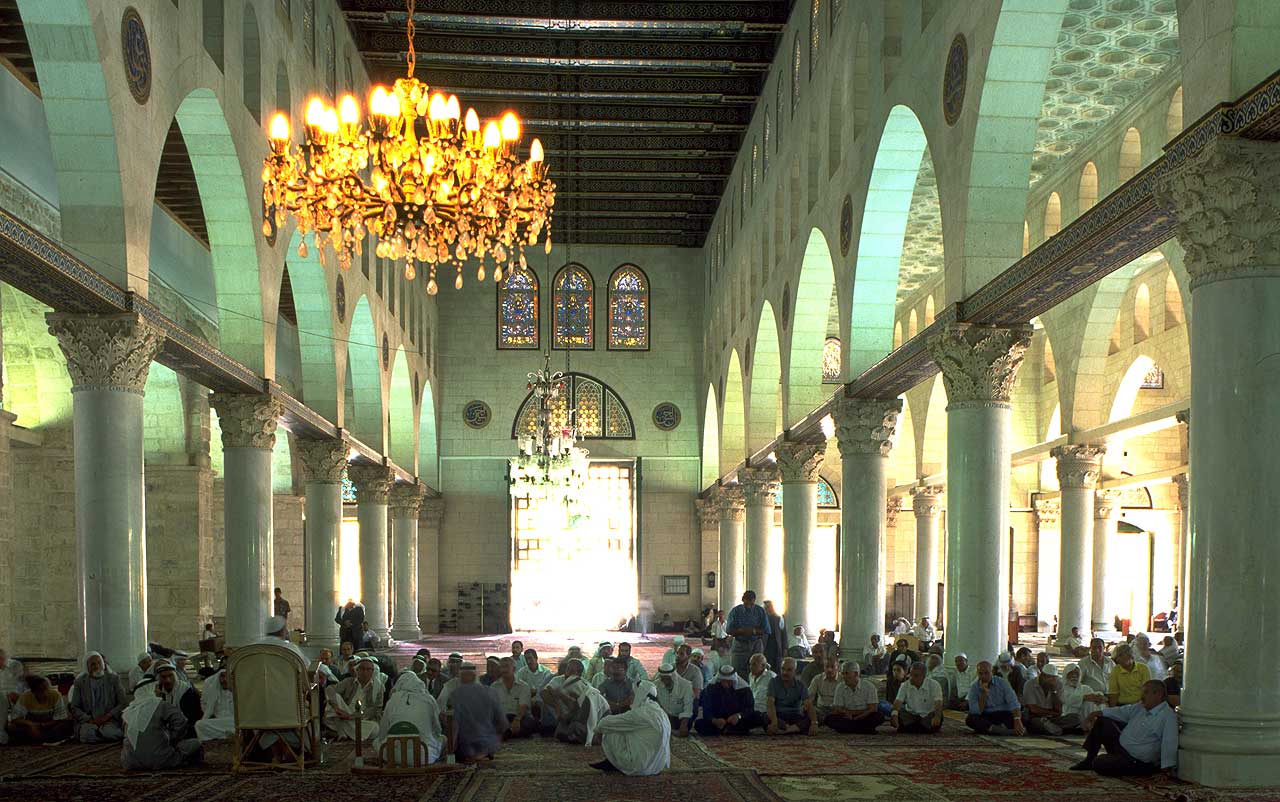Knowledge & Worship
Knowledge & Worship

“Whoever travels a path in search of knowledge,
Allah will make easy for him a path to Paradise.
People do not gather in the houses of Allah,
reciting the book of Allah and studying it together,
except that tranquility will descend upon them,
mercy will cover them, angels will surround them,
and Allah will mention them to those near him.”
narrated by Abu Huraira
in Sahih Muslim
“Whoever travels a path in search of knowledge, Allah will make easy for him a path to Paradise.
People do not gather in the houses of Allah, reciting the book of Allah and studying it together,
except that tranquility will descend upon them, mercy will cover them, angels will surround them,
and Allah will mention them to those near him.”
narrated by Abu Huraira
in Sahih Muslim
MUSLIMS CAME FROM all over the world to worship at Al-Aqsa and many stayed to study and teach within its precincts. The original spontaneous exchange of knowledge between travellers, many of whom had been companions of the Prophet, peace and blessings be upon him, eventually gave way to more formalised study. Circles of learning, where students gathered around a teacher for the transmission of knowledge about Islam, became established throughout the Sanctuary, inside Al-Aqsa Mosque and the Dome of the Rock and outside in its courtyards and gardens.
The language and grammar of the Qur’an, its memorisation, correct pronunciation and recitation, together with its exegesis, were primary subjects within the Sanctuary, as they were throughout the Muslim world. To this was added the study of the Sunna, the sayings and actions of the Prophet, peace and blessings be upon him, whose life was a living commentary on the Qur’an and a demonstration on how of apply its teachings.
Four schools of law, the Hanifi, Maliki, Shafi’i and Hanbali, began to develop in the second century ah, the early ninth century CE, with slightly different approaches to understanding and applying the Qur’an and Sunna. Scholars from all of these schools were represented in the Sanctuary, each respecting the methodology and rulings of the other. They were all aided by the developing science of hadith, which involved the meticulous collecting, verifying and recording of the sayings and actions of the Prophet, peace and blessings be upon him. Of these collections, the most famous are the rigorously authenticated collections of Imam al-Bukhari and Imam Muslim.
By the time the great scholar, Imam al-Ghazali, arrived for a period of retreat in the Sanctuary near the end of the 11th century CE, there were study circles for all the religious sciences, from all schools of thought, from all parts of the world. It was here that he commenced work on his magnum opus, the Revival of the Religious Sciences, Ihya’ ‘ulum al-din.